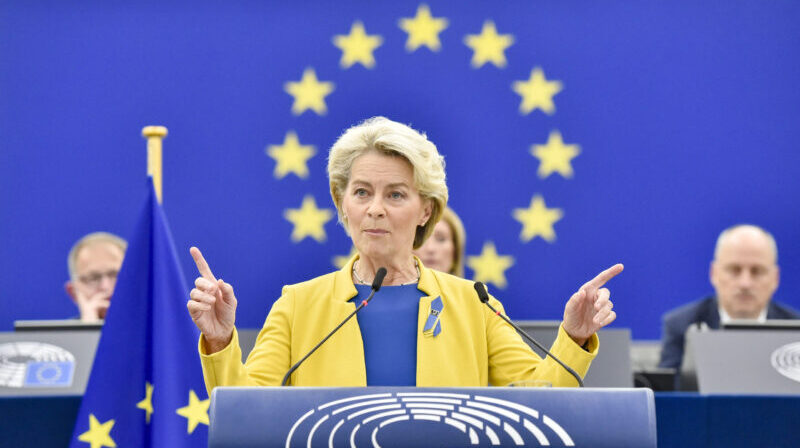The EU’s interpretation of a global renewables target is less ambitious than the Cop28 presidency’s and incompatible with the Paris agreement
The EU Council meets today to discuss and decide on the European Union’s goals for Cop28 in Dubai in November.
A global renewables target has been positioned as a centerpiece of the climate talks. The EU was among the first to get behind it in principle and will discuss at their Council meeting.
But there is an unexpected twist. The EU’s executive arm, the European Commission, has asked the EU’s council, which represents member states, to officially approve a negotiation mandate for a global renewables target.
‘Historic milestone’: Ecuador nears vote to keep Amazon oil on the ground
But their ambition falls short. Globally, we need to reach a yearly installment of, on average, at least 1.5 Terawatt (TW) renewable energy from 2030 onwards to be in line with the Paris Agreement. That’s clear from our own analysis and that of Climate Analytics.
However, the EUs internal documents only suggest yearly deployment rates which lands at below 1 TW. Even the UAE Cop28 President Sultan Al Jaber has put forward more ambitious proposals.
Why is the EUs global renewable ambition even lower than what a petro state has put forward? If the EU wants to be a renewable energy champion it needs to significantly up their game.
Why a target is crucial
Cop28 represents a pivotal moment in stopping the world warming by more than 1.5 degrees celsius through the Global Stocktake, a unique mechanism under the Paris Agreement to assess progress and to correct course.
If we are honest, we already know we are not doing enough. What matters is what comes next: Fossil fuels cause three-quarters of global greenhouse gas emissions.
Pacific “mixed feelings” after compromise on shipping’s climate goals
If this is the Cop to “course correct”, no outcome will be credible without a centerpiece decision to phase out all fossil fuels – coal, oil, and gas – while simultaneously powering up renewables.
A global renewable target is indispensable for guiding the entire energy transition. It provides governments with a benchmark for renewable deployment, informing decisions regarding planning permission, land use, grid connections, and auctions.
Additionally, the target guides governments on how to integrate renewable power effectively, considering factors like grid investments, flexibility, storage requirements, and market design changes.
In the coming decade, much of the newly added renewable electricity capacity will meet the growing electricity demand rather than replacing coal and gas generation.
What a target must entail
Science provides a clear framework for action. By 2050, we must completely eliminate fossil fuels to stay within the 1.5-degree carbon budget. This necessitates a rapid phase-out this decade, resulting in a 43% reduction in emissions by 2030 compared to 2019 levels.
Formulating a renewable energy target might be more complex. But its crucial and we must get it right.
The International Energy Association’s (IEA) scenarios provide a useful starting point. For achieving a 1.5C-aligned renewable energy deployment, the IEA predicts a peak installation of 1.2TW per year in the 2030s.
UAE’s al Jaber says Cop28 will fast-track phase down of fossil fuels
But this scenario has two significant flaws. First, the 1.2TW scenario assumes unrealistic utilisation of Carbon Capture and Storage (CCS) in the energy sector.
CCS has long been a deceptive tool of the fossil fuel industry, with limited emissions-cutting potential and exorbitant costs.
A recent Climate Analytics study estimates the emission-cutting contribution of CCS to be 0.1% by 2030. It is only viable in hard-to-abate sectors such as steel production, not energy.
Secondly, the IEA scenario envisions an unsustainable and unattainable growth of biomass. By excluding unrealistic amounts of biomass and CCS, a more realistic estimate for renewable deployment in the 2030s is 1.5 Terawatt.
In fact, the above highlighted Climate Analytics analysis also lands at this number. So there is a real question why the EU is locking itself into a low ambition Renewable Energy goal.
The target’s politics
Those who disguise cynicism for realpolitiks may say 1.5TW is aiming too high and a global fossil fuel phase out is politically not possible. But both are not only necessary, they are feasible.
This year, the world will add a record 0.44TW of new renewable capacity – double what the IEA expected for 2020. This represents a jump in renewable installment of about a third compared to last year.
Taking 0.440TW as the 2023 base, we don’t even need yearly growth of a third – a quarter is enough to exceed the 1.6 TW by 2029.
The UK’s retreat from climate leadership is not in its national interest
The EU falls short of what is needed and what we can achieve – but how does it to compare to the position of the UAE?
Al Jaber said: “We must triple renewable energy capacity over the next seven years”. That carries multiple interpretations.
But the most straightforward is this: Global renewable electricity capacity needs to triple from the end of 2023 to 12.2 TW by 2030.
This entails adding an average of 1.2 TW of renewable capacity each year from 2024 to 2030.
Not a
Read More

